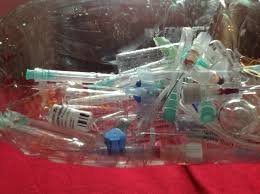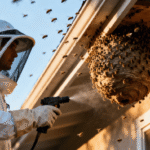Last Updated on October 9, 2024 by admin
Table of Contents
Introduction
Syringe disposal is a critical aspect of healthcare and personal safety that often gets overlooked. Improper disposal of syringes can lead to serious health and environmental risks. Understanding the risks associated with improper disposal and the importance of safe needle waste management is essential for everyone who uses syringes, from healthcare professionals to individuals managing chronic conditions.
Safe Disposal Methods
Using Sharps Containers
One of the most effective ways to dispose of syringes safely is by using a sharps container. These containers are specifically designed to handle needles and other sharp objects, preventing accidental needle-stick injuries and reducing the risk of contamination. Sharps containers are puncture-resistant and usually have a secure lid to ensure that used syringes are safely contained. They are widely available at pharmacies, medical supply stores, and through healthcare providers.
Drop-Off Locations and Collection Programs
Another safe disposal method is utilizing drop-off locations and needle disposal programs. Many communities offer designated drop-off sites where individuals can dispose of their syringes securely. These programs are often run by local health departments or waste management services and provide a convenient and safe way to dispose of used needles. Check with your local health department or municipal waste management service to find out if such programs are available in your area.
Guidelines for Disposal
Do’s and Don’ts
When disposing of syringes, it’s important to follow specific guidelines to ensure safety:
- Do: Place used syringes directly into the sharps container without attempting to recap or disassemble them.
- Don’t: Throw syringes in the regular trash or flush them down the toilet, as this can pose risks to sanitation workers and the environment.
Preparing Syringes for Disposal
Before placing syringes in a sharps container, ensure they are not mixed with other types of waste. Keep syringes in their original packaging until ready for disposal to prevent accidental exposure. If you have a large volume of syringes, consider contacting a local disposal service for guidance on bulk disposal.
Environmental and Health Impacts
Preventing Needle-Stick Injuries
Needle-stick injuries can occur if syringes are not disposed of properly. These injuries can lead to serious infections and health issues, especially if the needles come into contact with individuals who are not aware of their presence. Proper disposal methods help minimize these risks by containing used syringes in secure, puncture-proof containers.
Reducing Environmental Pollution
Improper disposal of syringes can lead to environmental contamination. When syringes are thrown in the trash or flushed, they can end up in landfills or water systems, potentially causing harm to wildlife and ecosystems. Using proper disposal methods helps to reduce this environmental impact by ensuring that syringes are handled and processed in a controlled manner.
Conclusion
In summary, safe syringe disposal is a crucial practice for protecting both personal and public health. Utilizing sharps containers, participating in local disposal programs, and following proper disposal guidelines can significantly reduce the risks associated with needle waste. By adhering to these practices, you contribute to a safer and cleaner environment, preventing needle-stick injuries and minimizing environmental pollution. Ensuring that syringes are disposed of properly is a small but significant step toward maintaining a safer and healthier community.
Apart from that, if you are interested to know about Is Teeth whitening safe? then visit our Health category.






















